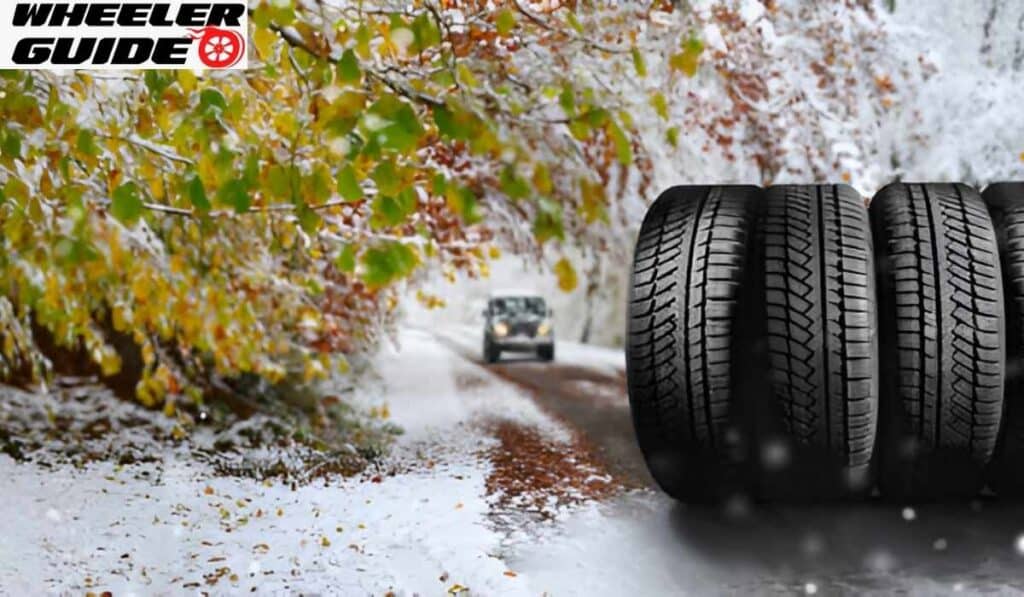Tractor tires come in different types, each designed for specific uses. The main types are R1, R3, and R4. These tires differ in their tread patterns and depths, which affect their performance on various surfaces.
R1 tires have deep treads for farm use, R3 tires have shallow treads for turf, and R4 tires have medium treads for industrial work. Picking the right tire type can make a big difference in how well a tractor works. Let’s look at each type to see how they can help with different farm tasks.
Fundamentals of Tractor Tires
Tractor tires come in various types designed for specific uses. The tread pattern and depth play key roles in determining a tire’s performance on different surfaces.
Categories of Tractor Tires
Tractor tires fall into several main categories. R1 tires are standard agricultural tires with deep, widely-spaced lugs for good traction in soil. R2 tires have even deeper treads for extra grip in muddy conditions.
R3 tires are turf tires with shallow, closely-spaced treads to minimize damage to grass. They’re wider than R1 tires for better weight distribution.
R4 tires are industrial tires with a tread depth between R1 and R3. They work well on hard surfaces and provide a smoother ride on roads.
The R1W designation indicates a wider version of the R1 tire for improved flotation in soft soil.

Tractor Tire Tread Design
The tread design greatly affects a tire’s performance. Deep bar-lug treads, common on R1 and R2 tires, provide excellent traction in loose soil. The wide spacing prevents mud buildup.
Shallow treads on R3 tires reduce soil compaction and turf damage. R4 tires have a compromised tread depth for versatility on different surfaces.
Tread angle impacts self-cleaning ability and traction. A 45-degree angle is common for good balance. Tire manufacturers often use special tread patterns for specific applications, like rice farming or forestry work.
Proper tire selection balances traction needs with soil compaction concerns and durability requirements for the intended use.
Performance and Maintenance Insights
Proper tire care and selection can greatly impact tractor performance and efficiency. The right choice can boost productivity and reduce operating costs.
Enhancing Tire Life and Efficiency
Regular tire pressure checks are key for optimal performance. Under-inflated tires wear faster and use more fuel. Over-inflation can lead to a bumpy ride and reduced traction.
Radial construction tires often last longer than bias-ply tires. They have a larger footprint, which spreads the load and reduces soil compaction. This can improve fuel efficiency by up to 6%.
Rotating tires can extend their life. It’s best to swap front and rear tires every 100 hours of use. This ensures even wear across all tires.
Using liquid ballast can improve traction and stability. It’s especially helpful for heavy loads on soft surfaces. But it can make the ride rougher and may damage tires if not done correctly.

Selecting the Right Tire for Your Tractor
R1 tires are great for most farm work. They have deep treads for good traction in soil. The Alliance Agri Star II is a popular R1 tire known for its durability.
R3 tires work well on turf. They have shallow treads to avoid damaging grass. The Alliance FarmPro II is a good R3 option for lawn care or golf course maintenance.
R4 tires are best for hard surfaces like gravel or pavement. They offer a balance of traction and wear resistance. The Alliance AgriFlex+ 354 is a versatile R4 tire.
Consider the tractor’s main use when choosing tires. R1 tires cost more but last longer in field work. R3 tires are cheaper but wear faster on hard surfaces.
Frequently Asked Questions
What are the distinguishing features of R1 tractor tires compared to other types?
R1 tractor tires have deep, aggressive treads designed for maximum traction in soft soil. They feature angled lugs that provide excellent self-cleaning capabilities in muddy conditions. R1 tires excel in fieldwork and are ideal for heavy-duty agricultural tasks.
How do R4 tires differ from R1 and R3 tires in terms of tread design and applications?
R4 tires have a less aggressive tread pattern compared to R1 tires. They are designed for carrying heavy loads over hard ground. R4 tires are more versatile than R1 or R3 tires, making them suitable for both field and road use.
Can you explain the suitability of R3 tires for John Deere tractors in various farming conditions?
R3 tires, also known as turf tires, have shallow treads that minimize damage to grass and lawns. They are ideal for John Deere tractors used in landscaping, mowing, or working in gardens. R3 tires provide good traction on firm surfaces while being gentle on turf.
What are the main applications and advantages of R1 tractor tires in agricultural settings?
R1 tractor tires excel in soft soil conditions and heavy fieldwork. They provide superior traction for plowing, tilling, and other demanding farm tasks. The deep lugs of R1 tires offer excellent grip in muddy or loose soil, enhancing the tractor’s performance in challenging terrain.
What do the rating numbers on tractor tires indicate about their design and usage?
The rating numbers (R1, R3, R4) indicate the tire’s intended use and tread design. R1 denotes aggressive agricultural tires, R3 represents turf tires, and R4 signifies industrial tires. These ratings help farmers choose the right tire for their specific needs and operating conditions.
How do I interpret the size chart for R1 tractor tires when selecting new tires?
R1 tractor tire size charts typically include the tire’s width, rim diameter, and aspect ratio. The first number represents the tire’s width in inches, followed by the aspect ratio, and then the rim diameter. For example, a size of 18.4-38 means the tire is 18.4 inches wide and fits a 38-inch rim.


